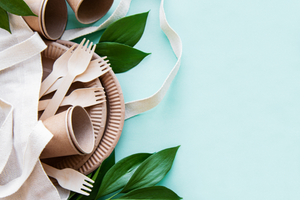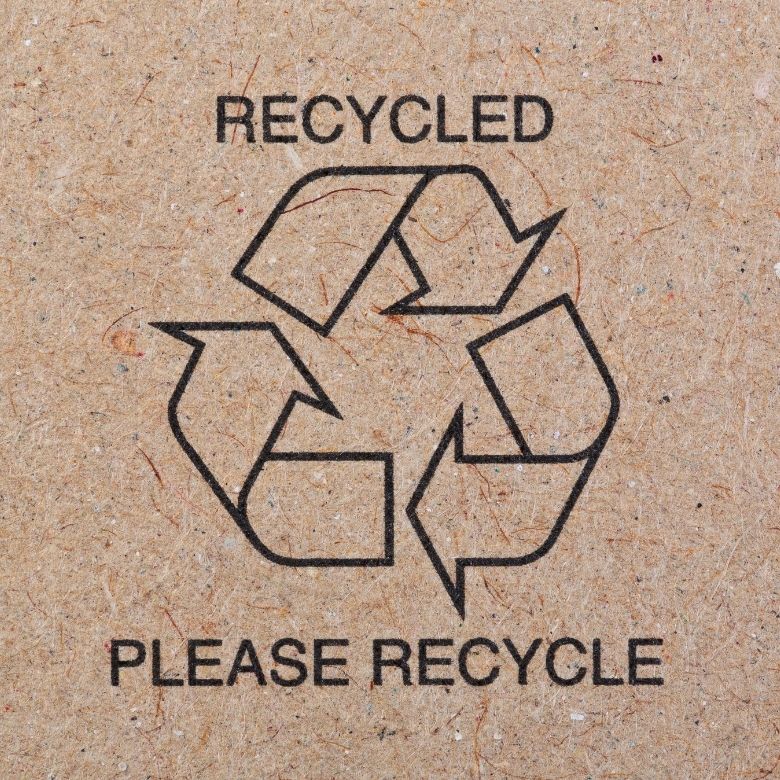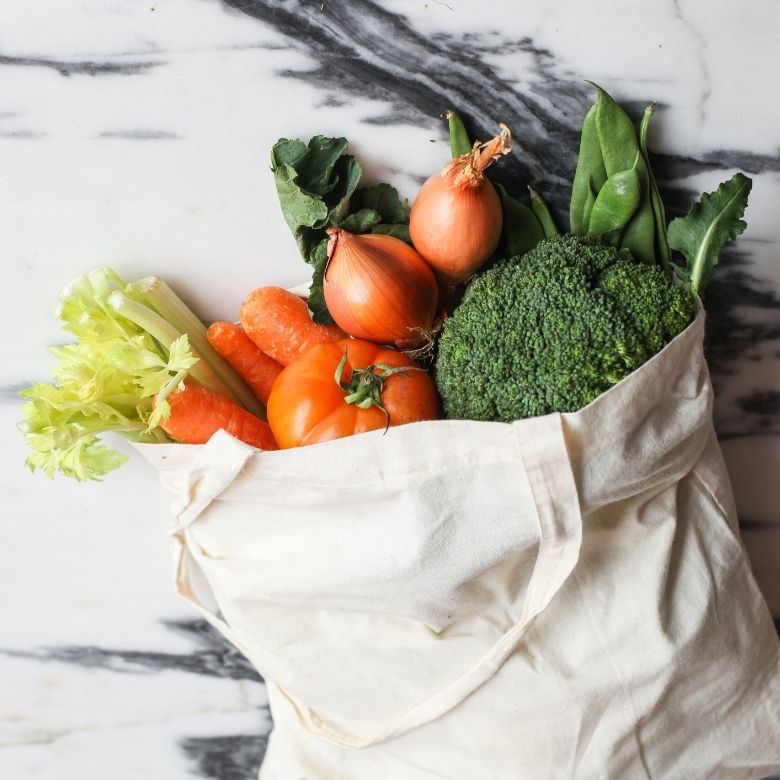Will single-use plastic cups, drinking straws, wrappers or shopping bags completely disappear from shops, eateries and our daily lives? On the one hand, the European Union wants to drastically reduce the consumption of plastic products. On the other, it is still uncertain whether there will be enough raw materials to fully compensate for the advantages of the plastic disposables. However, it is definitely worth following the changes in the plastics industry, which are a reflection of the global climate transformation. What alternatives does the packaging sector offer today and is the ear of paper really upon us? Enjoy an overview of the latest news and market trends.

New regulations vs the plastics industry
On 3rd July 2021, an EU directive, which had been announced for two years, came into force regarding the withdrawal from sale of certain single-use plastic products such as plastic drinking straws, stirrers and cotton buds. However, as of the date of publication of this article, the new regulations are not yet in force in Poland, as the government has not yet managed to draft a law that would allow the new EU regulations to be implemented. Our country is not alone – similar legislative problems are also affecting other European Union countries.
According to the Business Insider website, it is possible that the relevant regulations will be passed in the autumn, but it can already be said that real actions to limit the sale of plastic packaging are becoming a reality.
350 million tons of plastic per year
The problem of plastic waste polluting the planet exists – there is no doubt about that. Today, nearly 348 million tonnes of plastics are produced worldwide, accounting for 50% of all marine and ocean pollution. It is not surprising, then, that efforts are being made at both the national and international levels to reduce plastic consumption and increase the pressure to recycle it effectively.

Disposables trading ban and tax on plastic
According to a new EU directive, plastic products, such as the following, should be withdrawn from sale after 3rd July:
- drinking straws,
- cutlery,
- stirrers,
- cotton buds,
- plates,
- balloon sticks.
In addition, by 2025 the Member States will be obliged to reduce by 25% the use of plastic products for which there are no more ecological substitutes. These include: containers for vegetables or fruit, polystyrene food packaging, bottles and caps.
Another change is the implementation of an additional tax, called the “Plastic Tax”, from 1st January 2021, amounting to EUR 800 for every tonne of plastic produced and not recycled. The European Union is currently allocating revenues from this source to fight the COVID-19 pandemic.
Brussels says: “More Recycling!”
These activities are also aimed at making the EU member states even more involved in the processing of plastics, which can give them a “second life”. As a result, less plastic in the form of waste is expected to end up in the seas and oceans and litter the environment. Under the new regulations, by 2025 a minimum of 77% of plastic bottles are to be recycled, and by 2030 this figure is expected to be as high as 90%. And by 2026, EU countries are obliged to reduce the average number of plastic bags used per person from 90 (currently) to 40.

What if not plastics? The latest trends in the packaging industry
Given all the regulations that have been announced and already implemented, it is not surprising that for years there have been attempts around the world to replace packaging and plastic products with other, more environmentally friendly and better recyclable materials. What alternatives are global (including Polish) manufacturers offering? Here is an overview of the most interesting trends in the disposable packaging market.
Paper
Paper bags or packaging for some food products are nothing new, but in recent years, paper disposables are increasingly replacing, among others, plastic cups and drinking straws. Nowadays, almost anything can be wrapped in paper, hence the global popularity of cups, plates, pouches and boxes.
Wood
As an alternative to plastic, wood is ideal for various types of transport packaging, such as crates and boxes. In recent years, many catering companies have given up on plastic forks and knives with their meals, replacing them with cutlery made of wood, e.g. bamboo. Such solutions are certainly more “eco”, but keeping them clean, for example, may turn out to be more problematic.
Glass
Unlike disposable bottles or containers made of plastic, glass packaging can be reused many times. Modern technologies allow the production of glass vessels of any shape and size, but the unit price of this type of product is many times higher than the price of plastic disposables.
Sea algae
A relatively new and increasingly popular substitute for plastic products is seaweed packaging. As it turns out, products based on marine algae can successfully replace cups, bottles and jars. Their production is cheaper and the decomposition time is no more than 4 weeks. However, after use, such a packaging may as well be… eaten.
Mushrooms
It is time for the Polish contribution to the fight for a clean environment and a reduction in plastic. SCOBY is an organic packaging made of kombucha mushrooms, perfect for packing and extending the freshness of food products. Often called the Japanese mushroom, kombucha is edible, so the packaging can be eaten with their contents. However, if we are not mushroom gourmets, the bag can be used for compost.
Hemp
Composite materials made from industrial hemp are certainly an interesting solution for reducing plastic packaging. They are used extensively by the music industry (instrument casings and audio equipment) and by the automotive industry, e.g. in the production of dashboards, cockpit trims and boot tops.

Nanocellulose
Nanocellulose is a strong, biodegradable material derived from wood pulp, a waste product of the paper industry. The use of this material is further enhanced by the fact that it is resistant to the penetration of greases and gases. In addition to the food industry, biocellulose products are used, among others, in aesthetic medicine (as biological implants), cosmetics and pharmaceuticals.
Wheat bran
Plates, cutlery, but also many other dishes and packages are also made of wheat bran. This original and above all, edible substitute for plastics is also promoted by Polish companies. Importantly, such dishes can be heated in microwave ovens, and their complete biodegradation takes place after 1 month.
How can we be “Zero Waste”?
The search for the perfect replacement for plastics will certainly take many years. However, it is worth considering what we can do now to reduce the use of disposable products as much as possible in order to keep the planet clean. Often a small change in habits can mean that each of us will generate much less rubbish every year.
Shopping with your own bag
It is worth starting by stopping using disposable plastic bags. The popular shopping bags can be replaced by your own reusable bag, which not only has enough space for all of your essentials, but can also become an interesting complement to many fashionable outfits.
Waste segregation
Paying even more attention to proper waste segregation is another step towards a cleaner planet. Putting waste in dedicated bins or taking it to collection points is an effortless process that can increase the effectiveness of plastics recycling.
Coffee to go? In your favourite mug!
The solution to the problem of drink cups littering the city is to go to the café with your own mug. This increasingly popular trend, which already has a large group of followers, is strongly supported by numerous catering establishments which encourage people to drink coffee in cups brought from home, e.g. through attractive discounts.
By weight instead of in packs
The amount of plastic packaging that is turned into waste can also be reduced by choosing products that are sold in bulk rather than those that are packaged. Shops where you can buy by weight and then put or pour the products into your own containers, brought from home, are becoming increasingly popular.

What does the future hold for us?
The packaging market is constantly evolving. New trends and increasingly creative alternatives to plastic products are emerging. However, it is difficult to risk saying today that the era of paper products is upon us. It cannot be denied that the production of many replacement materials generates much higher costs and is not always as ecological as you might think. It is certainly worth paying attention to novelties, while increasing the emphasis on the processing of packaging and plastic products. Effective recycling seems to be the most important challenge for the entire industry today.